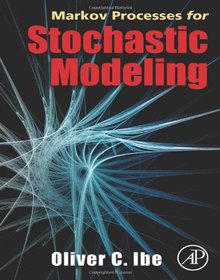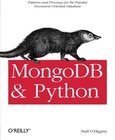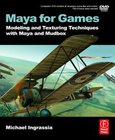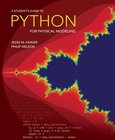Markov Processes for Stochastic Modeling

Book Details:
| Publisher: | Academic Press |
| Series: | Academic Press |
| Author: | Oliver C. Ibe |
| Edition: | 1 |
| ISBN-10: | 0123744512 |
| ISBN-13: | 9780123744517 |
| Pages: | 512 |
| Published: | Sep 16 2008 |
| Posted: | Nov 19 2014 |
| Language: | English |
| Book format: | |
| Book size: | 2.11 MB |
Book Description:
Markov processes are used to model systems with limited memory. They are used in many areas including communications systems, transportation networks, image segmentation and analysis, biological systems and DNA sequence analysis, random atomic motion and diffusion in physics, social mobility, population studies, epidemiology, animal and insect migration, queueing systems, resource management, dams, financial engineering, actuarial science, and decision systems. This book, which is written for upper level undergraduate and graduate students, and researchers, presents a unified presentation of Markov processes. In addition to traditional topics such as Markovian queueing system, the book discusses such topics as continuous-time random walk,correlated random walk, Brownian motion, diffusion processes, hidden Markov models, Markov random fields, Markov point processes and Markov chain Monte Carlo. Continuous-time random walk is currently used in econophysics to model the financial market, which has traditionally been modelled as a Brownian motion. Correlated random walk is popularly used in ecological studies to model animal and insect movement. Hidden Markov models are used in speech analysis and DNA sequence analysis while Markov random fields and Markov point processes are used in image analysis. Thus, the book is designed to have a very broad appeal. - Provides the practical, current applications of Markov processes- Coverage of HMM, Point processes, and Monte Carlo- Includes enough theory to help students gain throrough understanding of the subject- Principles can be immediately applied in many specific research projects, saving researchers time- End of chapter exercises provide reinforcement, practice and increased understanding to the student
Download Link:
Related Books:
MongoDB and Python
Patterns and processes for the popular document-oriented database
Learn how to leverage MongoDB with your Python applications, using the hands-on recipes in this book. You get complete code samples for tasks such as making fast geo queries for location-based apps, efficiently indexing your user documents for social-graph lookups, and many other scenarios.This guide explains the basics of the document-oriented database and shows you how to set up a Python environment with it. Learn how to read and write to MongoDB, apply idiomatic MongoDB and Python patterns, and use the database with several popular Python web frameworks. You'll discover how to model your data, write effective queries, and avoid concurrency problems such as race conditions and deadlocks.The recipes will help you:Read, write, count, and sort documen...
Maya for Games
Modeling and Texturing Techniques with Maya and Mudbox
Well-known Maya professional, Michael Ingrassia, takes readers through his unique style of modeling: "Image Based Modeling" where efficient, realistic models can be created very quickly. Ingrassia's techniques allow modelers to create exact replicas of their concept characters or objects. The techniques presented are very efficient and allow game modelers to quickly build out stand alone props to populate environments and game levels. Presented are tried and true techniques that the author has used successfully in game production for the past 10 years. Most, if not all 3D books, focus on basic "box" modeling techniques, which are the basis for proper 3D modeling but not the complete solution. In the author's experience, students w...
A Student's Guide to Python for Physical Modeling
Python is a computer programming language that is rapidly gaining popularity throughout the sciences. A Student's Guide to Python for Physical Modeling aims to help you, the student, teach yourself enough of the Python programming language to get started with physical modeling. You will learn how to install an open-source Python programming environment and use it to accomplish many common scientific computing tasks: importing, exporting, and visualizing data; numerical analysis; and simulation. No prior programming experience is assumed. This tutorial focuses on fundamentals and introduces a wide range of useful techniques, including: * Basic Python programming and scripting* Numerical arrays* Two- and three-dimensional graphics* Monte Carlo simulat...
2007 - 2021 © eBooks-IT.org



